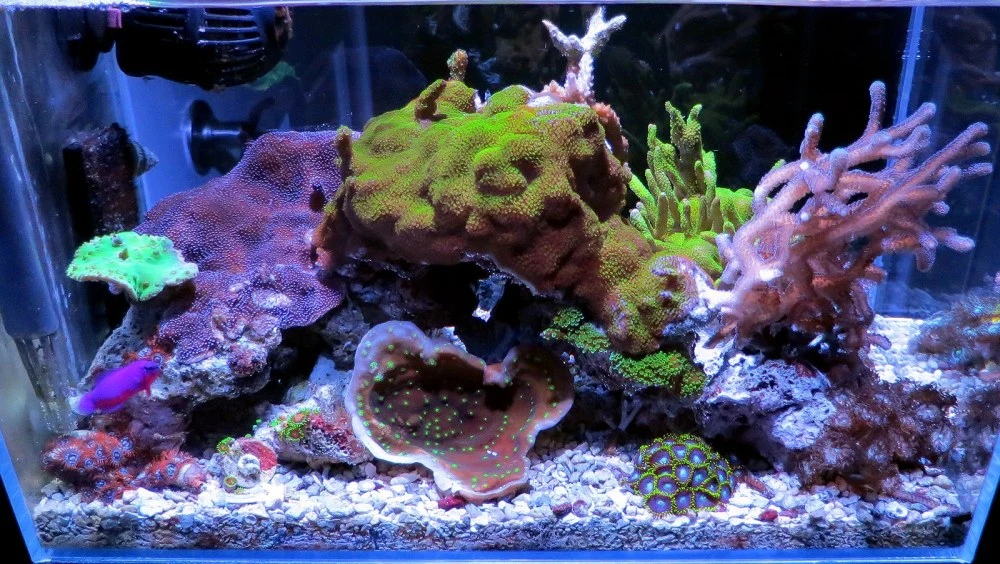Stunning 4-Gallon Reef Tank – Postlarval Kow's TOTM | NanoReef

Tank Specifications
Volume: 4 Gallons / 17 Liters
Dimensions (L × W × H):
12.0" ×
12.0" ×
12.0"
30.5cm ×
30.5cm ×
30.5cm
Equipment List
- Salt: Instant Ocean
Frequently Asked Questions
How do I set up a pico reef tank like yours?
To set up a pico reef tank, start with a high-quality aquarium—like the Ultum Nature Systems Rimless 4.6 Gallon. Add around 5 pounds of recycled rock and a layer of coarse crushed coral for substrate. Ensure to have suitable filtration and a reliable heater; I used a Free Sea 50-watt heater. Incorporate circulation through a reliable pump, such as the AquaClear 20 combined with a Koralia 240 Nano. High-quality RO/DI water is crucial—consider treating it with salt mix like Instant Ocean Reef Crystals to achieve a specific gravity of 1.025.
What is your maintenance routine for your reef tank?
I perform a 50% water change every 2-3 weeks to maintain water quality, as I find that removing and replacing water helps correct any minor issues. Feeding is sporadic, with a mixture of Reef Roids and frozen mysid shrimp, approximately twice a week. Regular observation and light algae scraping with a Nano-Flipper keep the tank looking pristine.
How can I manage algae in my tank?
To manage algae, regular scraping and cleaning of the glass and substrates is essential. I use a Nano-Flipper for glass cleaning. If there are algae blooms, ensure adequate water changes and maintain flow rates in the tank, as many algae can be outcompeted with proper flow. If the algae type is stubborn, you can manually remove or treat specific species with targeted methods, like using AiptasiaX for Aiptasia.
How do you acclimate new corals to your tank?
I acclimate new corals by using a bowl method. I place the corals in a glass bowl and dilute the shipping water with an equal part of my tank water. After 15-30 minutes, I replace 50% of the water in the bowl twice, maximizing the acclimation period to about an hour. This ensures minimal stress and allows the corals to adapt to my tank's parameters.
What steps can I take to remedy a tank crash or significant water parameter shift?
If you experience a tank crash, first assess the situation—check salinity, temperature, and look for visible signs of stress in inhabitants. Gradually correct parameter discrepancies, prioritizing salinity and temperature stability. Conduct frequent water changes to dilute toxins and improve the water quality rapidly. Monitor the health of corals and fish closely and be prepared for massive water changes over several days if necessary.
What should I do if I find flatworms or pests in my tank?
For flatworms, avoid panic. Cycle through sucking them out manually over a few days—most fish can help control them over time. If pests like aiptasia appear, use products like AiptasiaX to eliminate them. Remember to monitor the tank and observe for any pests or diseases regularly.